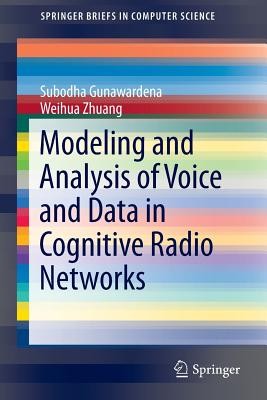
- We will send in 10–14 business days.
- Author: Subodha Gunawardena
- Publisher: Springer
- ISBN-10: 3319046446
- ISBN-13: 9783319046440
- Format: 15.6 x 23.4 x 0.5 cm, minkšti viršeliai
- Language: English
- SAVE -10% with code: EXTRA
Modeling and Analysis of Voice and Data in Cognitive Radio Networks (e-book) (used book) | bookbook.eu
Reviews
Description
This Springer Brief investigates the voice and elastic/interactive data service support over cognitive radio networks (CRNs), in terms of their delay requirements. The increased demand for wireless communication conflicts with the scarcity of the radio spectrum, but CRNS allow for more efficient use of the networks. The authors review packet level delay requirements of the voice service and session level delay requirements of the elastic/interactive data services, particularly constant-rate and on-off voice traffic capacities in CRNs with centralized and distributed network coordination. Some generic channel access schemes are considered as the coordination mechanism, and call admission control algorithms are developed for non-fully-connected CRNs. Other key topics include the advantages of supporting voice traffic flows with different delay requirements, the mean response time of the elastic data traffic over a centralized CRN, and effects of the traffic load at the base station and file length (service time requirement) distribution on the mean response time. The brief is designed for professionals and researchers working with wireless networks, cognitive radio, and communications. It is also a helpful reference for advanced-level students interested in efficient wireless communications.
EXTRA 10 % discount with code: EXTRA
The promotion ends in 23d.14:23:37
The discount code is valid when purchasing from 10 €. Discounts do not stack.
- Author: Subodha Gunawardena
- Publisher: Springer
- ISBN-10: 3319046446
- ISBN-13: 9783319046440
- Format: 15.6 x 23.4 x 0.5 cm, minkšti viršeliai
- Language: English English
This Springer Brief investigates the voice and elastic/interactive data service support over cognitive radio networks (CRNs), in terms of their delay requirements. The increased demand for wireless communication conflicts with the scarcity of the radio spectrum, but CRNS allow for more efficient use of the networks. The authors review packet level delay requirements of the voice service and session level delay requirements of the elastic/interactive data services, particularly constant-rate and on-off voice traffic capacities in CRNs with centralized and distributed network coordination. Some generic channel access schemes are considered as the coordination mechanism, and call admission control algorithms are developed for non-fully-connected CRNs. Other key topics include the advantages of supporting voice traffic flows with different delay requirements, the mean response time of the elastic data traffic over a centralized CRN, and effects of the traffic load at the base station and file length (service time requirement) distribution on the mean response time. The brief is designed for professionals and researchers working with wireless networks, cognitive radio, and communications. It is also a helpful reference for advanced-level students interested in efficient wireless communications.


Reviews